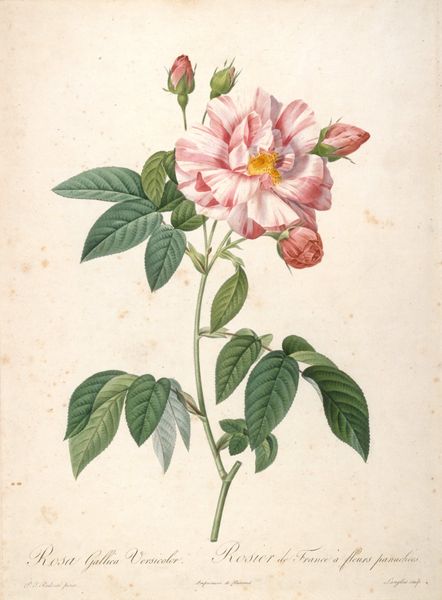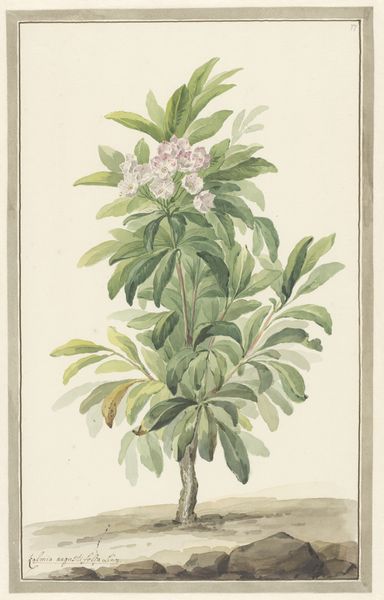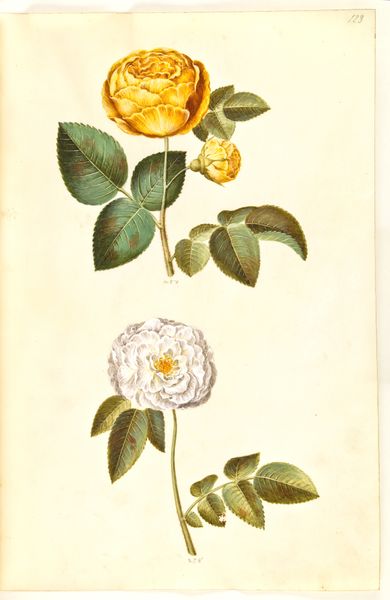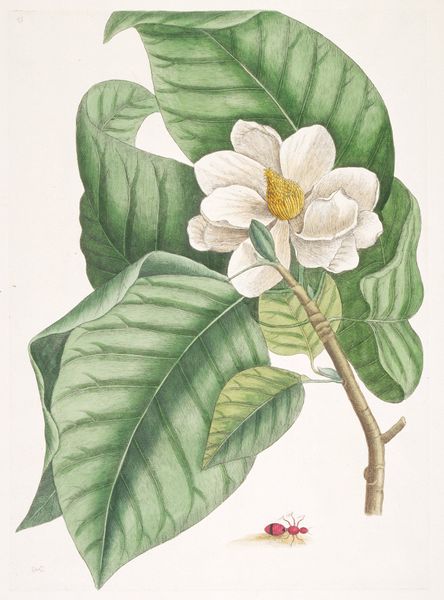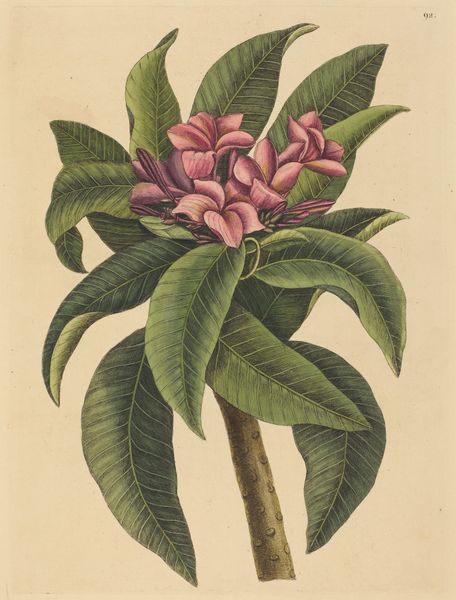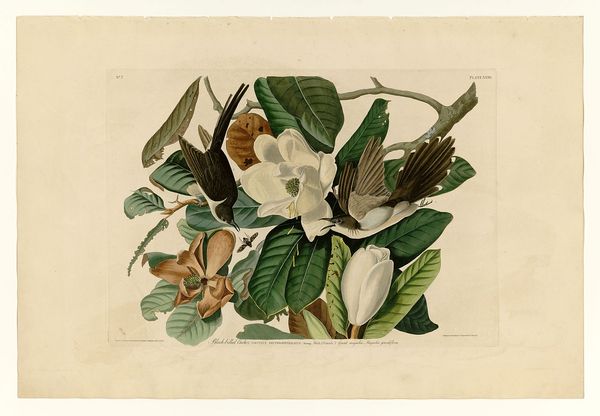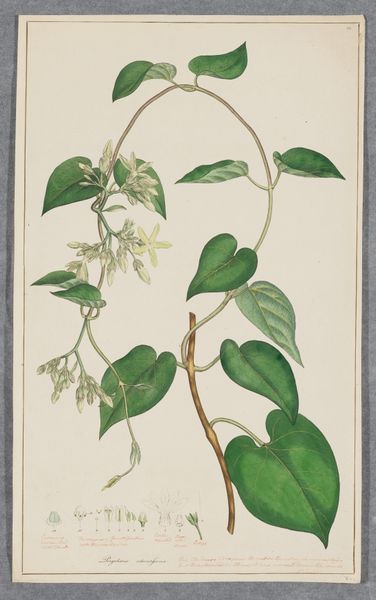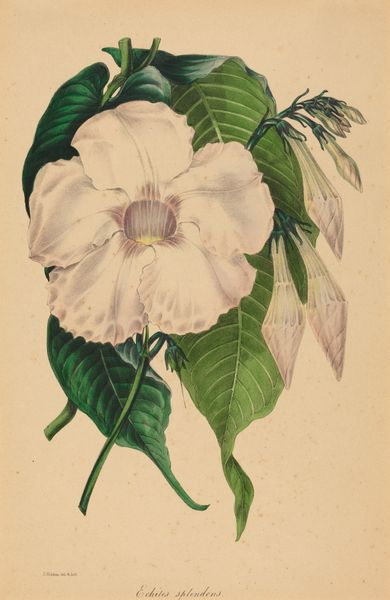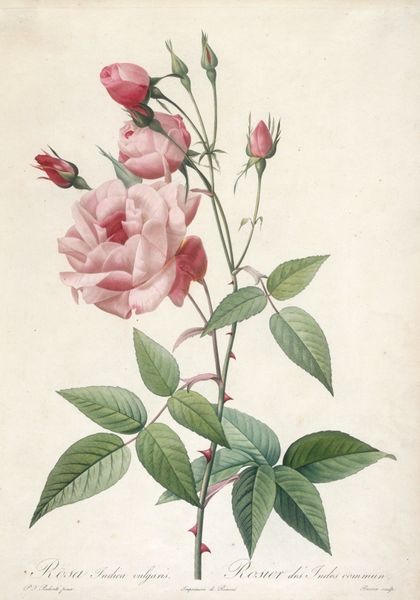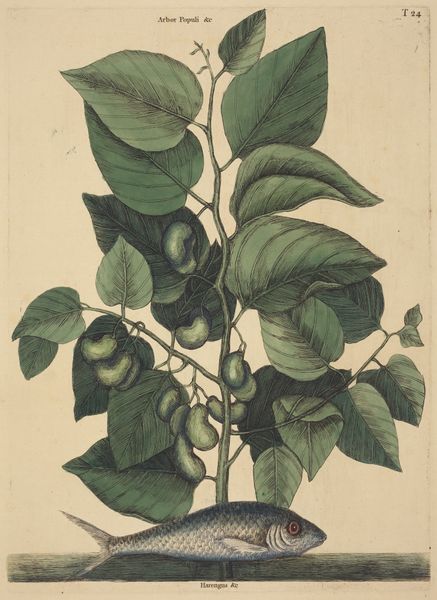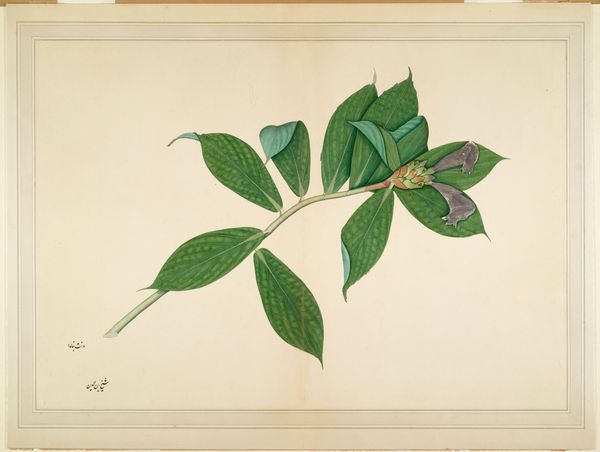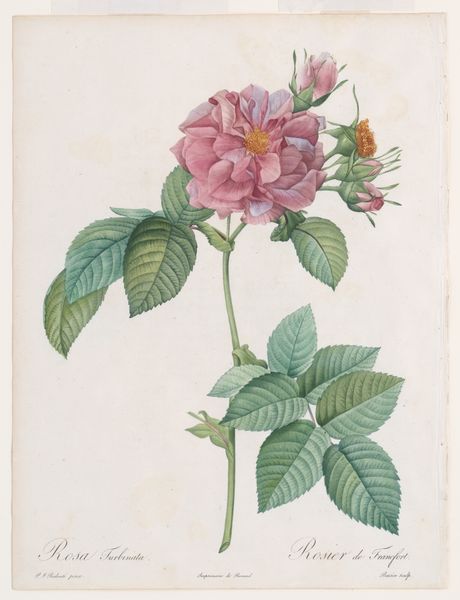
drawing, print, watercolor
#
drawing
# print
#
landscape
#
culinary art
#
watercolor
#
watercolour illustration
#
botanical art
#
watercolor
Dimensions: 21 x 13 7/8 in. (53.34 x 35.24 cm) (plate)
Copyright: Public Domain
Curator: Standing before us is "Magnolia Glauca," a watercolor drawing and print created around 1813. It’s currently held in the collection of the Minneapolis Institute of Art. Editor: It feels incredibly serene. All those cool greens and silvery leaves… Makes me think of early mornings in a garden after a rain shower. Curator: This work reflects a burgeoning interest in botanical illustration during that era. Prints like these were valued both for their aesthetic appeal and scientific accuracy. There was real craft at play here, as each print was often meticulously hand-colored. Editor: Absolutely. The almost surgical precision is fascinating. And yet, beyond just representation, it feels… idealized. The magnolia is perfectly illuminated, as if on a stage. The leaves show even small signs of being a perfect nature sample, this adds a quality beyond objective observation, a celebration perhaps. Curator: Indeed, the creation and dissemination of botanical art intersected with developing class distinctions as well, indicating access to leisure time, scientific engagement and natural history studies, and refined artistic appreciation. These images were objects of knowledge but also consumption. Editor: That makes me wonder about the artist too. I can't seem to find much information regarding who this creator was. How they observed the way the light fell on the leaves and petals, their hand must've danced delicately between precision and expressiveness! Curator: This speaks to broader debates about authorship and the relative status of 'craft'. Anonymous works often mask skilled labor practices. We see, especially with practices like watercolor illustration, traditional 'high art' definitions constantly challenged. Editor: Right. Well, I know that next time I see a magnolia, I'll think about this artist and all the other craftspeople behind this. How their work brings science and art and social standing into bloom. Curator: Precisely. "Magnolia Glauca" allows us to contemplate art production in intersection with history and material culture through the aesthetic and economic considerations defining art.
Comments
No comments
Be the first to comment and join the conversation on the ultimate creative platform.
